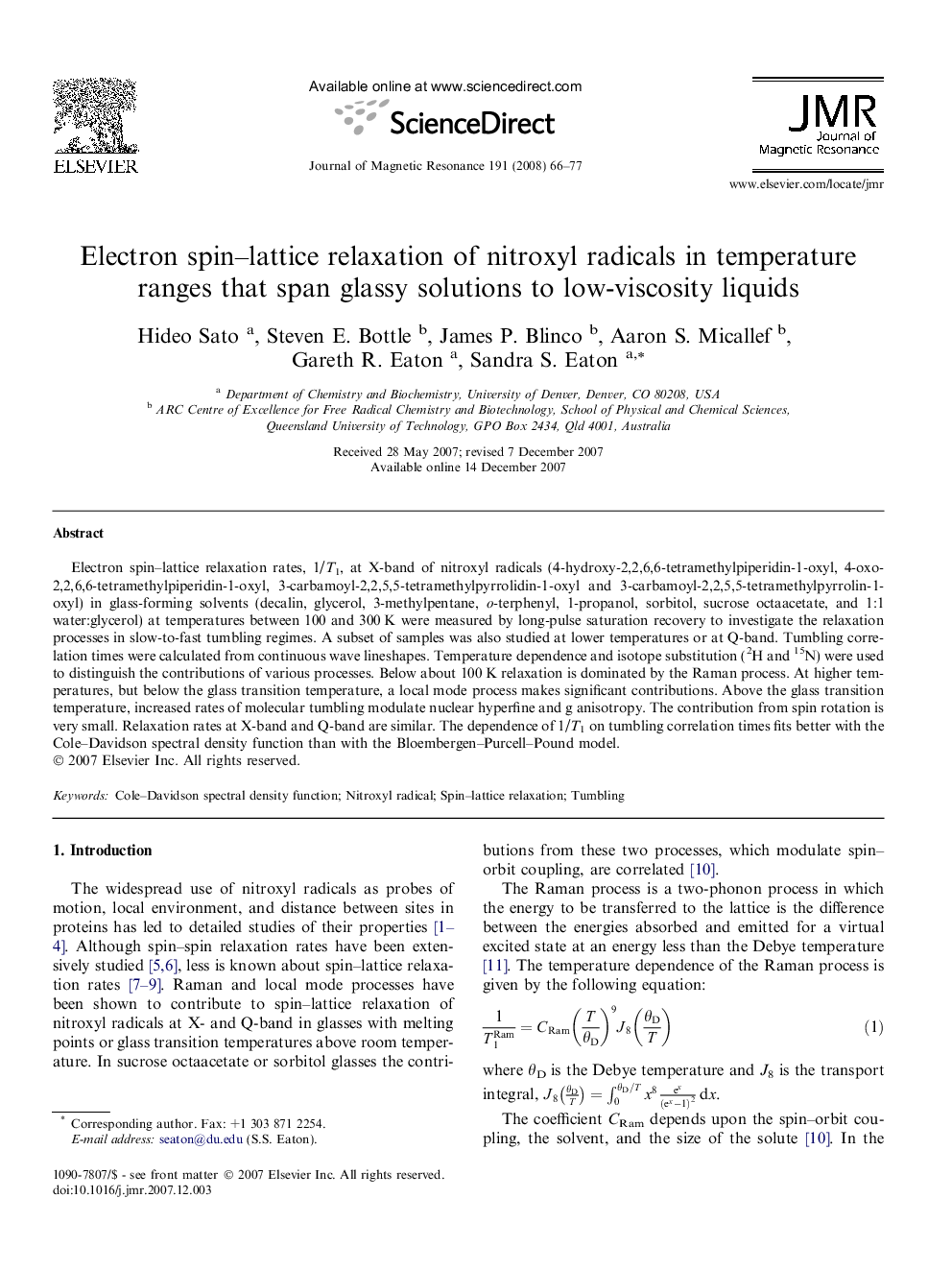| Article ID | Journal | Published Year | Pages | File Type |
|---|---|---|---|---|
| 5407001 | Journal of Magnetic Resonance | 2008 | 12 Pages |
Abstract
Electron spin-lattice relaxation rates, 1/T1, at X-band of nitroxyl radicals (4-hydroxy-2,2,6,6-tetramethylpiperidin-1-oxyl, 4-oxo-2,2,6,6-tetramethylpiperidin-1-oxyl, 3-carbamoyl-2,2,5,5-tetramethylpyrrolidin-1-oxyl and 3-carbamoyl-2,2,5,5-tetramethylpyrrolin-1-oxyl) in glass-forming solvents (decalin, glycerol, 3-methylpentane, o-terphenyl, 1-propanol, sorbitol, sucrose octaacetate, and 1:1 water:glycerol) at temperatures between 100 and 300Â K were measured by long-pulse saturation recovery to investigate the relaxation processes in slow-to-fast tumbling regimes. A subset of samples was also studied at lower temperatures or at Q-band. Tumbling correlation times were calculated from continuous wave lineshapes. Temperature dependence and isotope substitution (2H and 15N) were used to distinguish the contributions of various processes. Below about 100Â K relaxation is dominated by the Raman process. At higher temperatures, but below the glass transition temperature, a local mode process makes significant contributions. Above the glass transition temperature, increased rates of molecular tumbling modulate nuclear hyperfine and g anisotropy. The contribution from spin rotation is very small. Relaxation rates at X-band and Q-band are similar. The dependence of 1/T1 on tumbling correlation times fits better with the Cole-Davidson spectral density function than with the Bloembergen-Purcell-Pound model.
Related Topics
Physical Sciences and Engineering
Chemistry
Physical and Theoretical Chemistry
Authors
Hideo Sato, Steven E. Bottle, James P. Blinco, Aaron S. Micallef, Gareth R. Eaton, Sandra S. Eaton,
